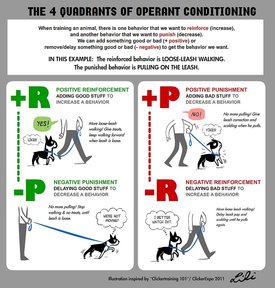The Basic Principles Of Spring Canine
The Basic Principles Of Spring Canine
Blog Article
Indicators on Spring Canine You Need To Know
Table of ContentsNot known Incorrect Statements About Spring Canine Facts About Spring Canine UncoveredSpring Canine Things To Know Before You Get ThisExamine This Report on Spring CanineThe smart Trick of Spring Canine That Nobody is Talking About
Dogs in the wild obey the policies of the pack. These regulations offer them well because situation however we've asked to cope with us and our rules have to now be followed. It is definitely possible to have a trained canine that is still a pet dog and we must beware to educate them as animals and not young children.There are a couple of pet dog training basics to consider. The objective of training is to have a courteous pet that is certain and relaxed.
Canines can begin training as very early as three months. Before that, their focus is not good sufficient. Educating a pup can be a challenge initially but if you start with basics such as "Sit!" and "Stay," your puppy will find out rapidly. Older canines can absolutely be trained and though they may be slower with the uptake, their calmer disposition makes training simpler. Though it is useful to supplement with publications and videos, your pet must attend at the very least a basic obedience course.
Spring Canine Can Be Fun For Anyone

This will unwind your pet and give him self-confidence. As a teacher, be constant and develop a training routine for you and your pet dog.
It's much better to do two fifteen min sessions daily than one half-hour session. Most obedience training techniques today utilize favorable support. Some utilize it exclusively while others combine it with improvement. Picking a technique depends upon which strategy you are most comfortable with, maintaining in mind your pet dog's character.
Getting My Spring Canine To Work
Though the standard commands are comparable among various training approaches, one approach may be much better for your pet dog than one more. For example, a shy Yorkie is less most likely to respond well to a restorative technique while a bull-headed Pit Bull will most likely need a combination of positive and rehabilitative reinforcement. This approach uses physical corrections to train a pet. If you tell your pet dog to rest and he stays standing, you may offer a gentle jerk on his collar or choke chain while pressing down his rump.
This method is taken into consideration to be dated by several modern-day trainers but you'll discover that some pet dogs (like that bull-headed Pit Bull) could reply to this after failing with positive reinforcement training. This is one of one of the most popular recent kinds of pet training and was presented by Karen Pryor.

More About Spring Canine
This is another positive support technique however the reward is not the association with the clicker, but some kind of incentive. The reward can be a favorite toy, food, or anything he likes (other than the pet cat). When you give the reward, you must commend your pet dog in a high pitched encouraging voice.

A pet dog that is being aggressive towards another pet can be fixed by using a clawed hand to his neck. This imitates what his mommy would have carried out in the wild. This technique calls for some study right into the behavior of pet dogs but it can produce a really tight bond in between you.
You might likewise be interested in discovering concerning the cognitive features of dogs. This will help you comprehend just how your pet thinks and will make training much easier.
Everything about Spring Canine
When bringing a brand-new pet dog home, it might be frustrating to consider training. https://springcanine.bandcamp.com/album/spring-canine. There are a few various types of training methods to attempt, yet which one is ideal for you and your dog? Below are simply a few of the different kinds of pet dog training techniques: In favorable reinforcement training, the instructor compensates the pet completely actions
Instructors will then ignore bad habits or hold back treats when a canine does not behave well. * (Amazon Associate Web link) to signify immediately when a pet has done check it out something excellent. will my foster dog think i abandoned him.
Report this page